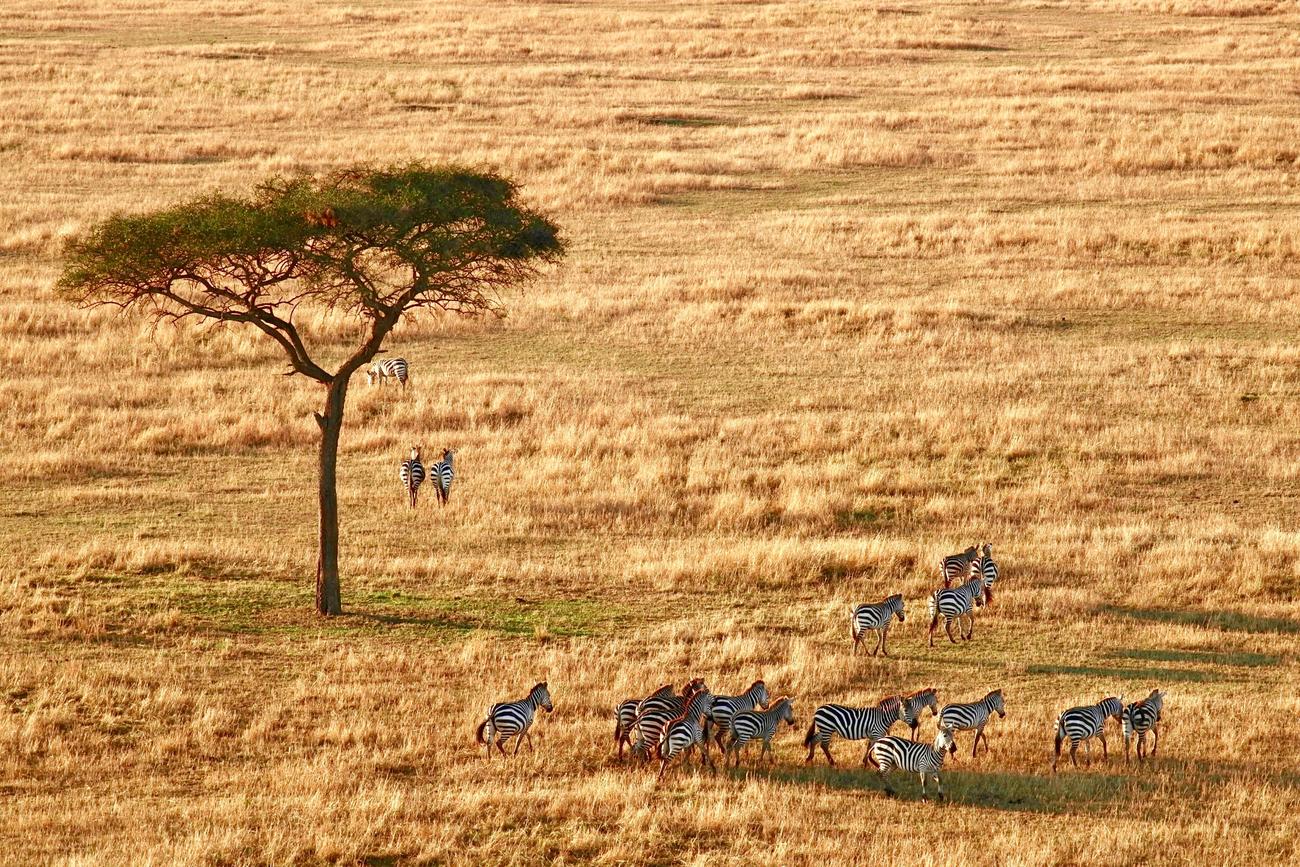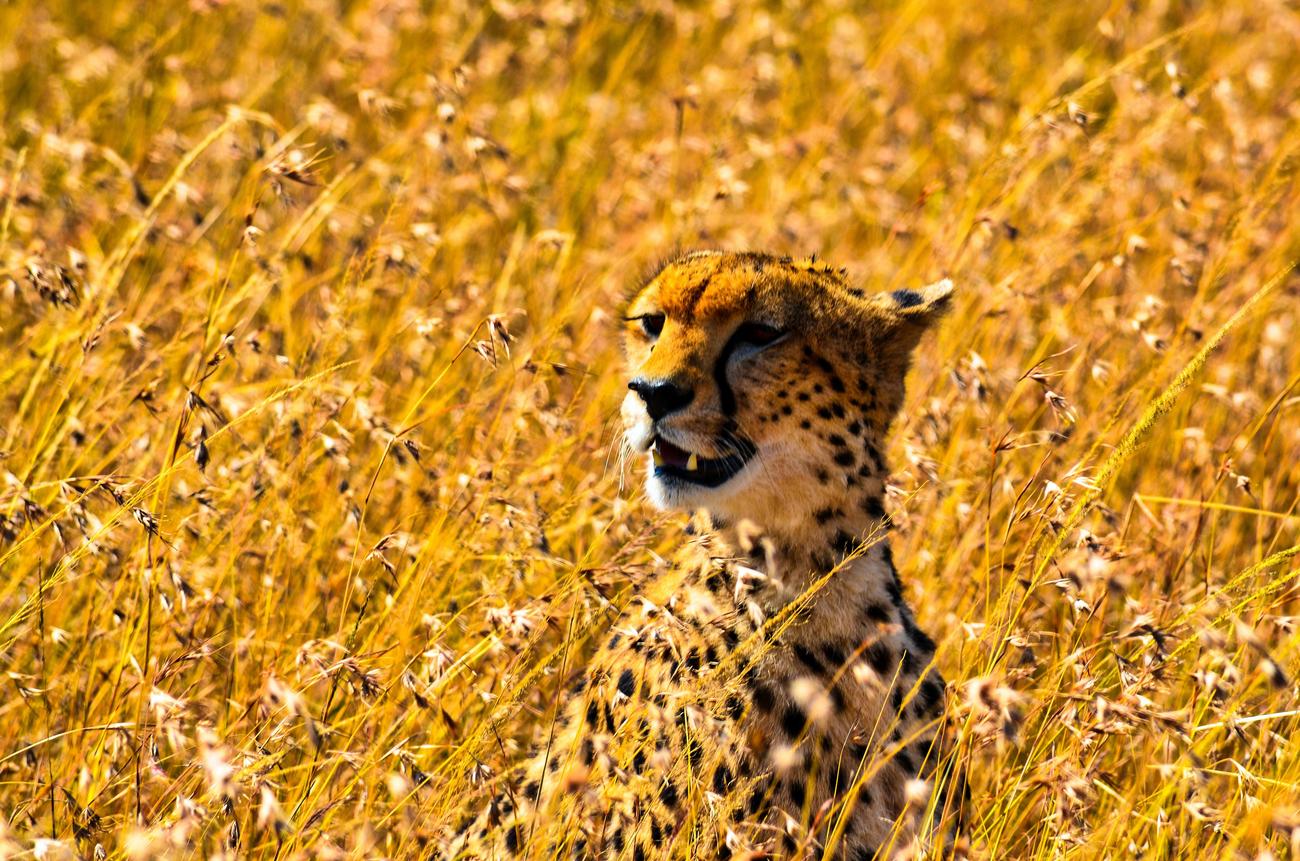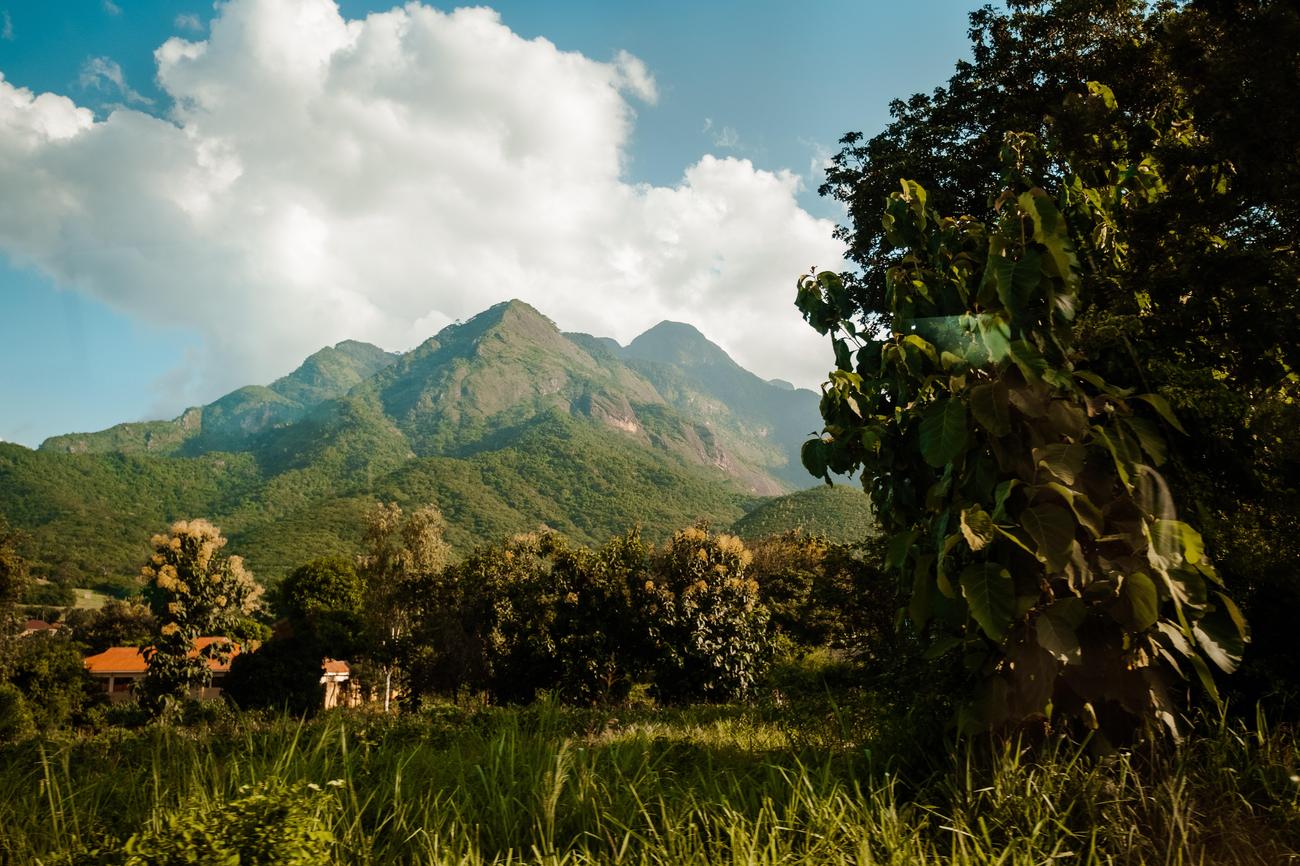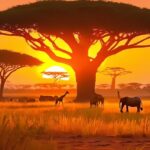Prepare to be enchanted as we uncover the captivating wonders of Tanzania in this article titled “The Enchanting Discoveries: 10 Facts About Tanzania”. This East African gem is a treasure trove for adventure-seekers and culture enthusiasts alike. Brace yourself for an exhilarating journey through the land that boasts the tallest mountain in Africa, Mount Kilimanjaro, and witness the awe-inspiring spectacle of over 1.5 million animals embarking on their annual migration during the Great Migration. As an experienced travel journalist and avid explorer, I am thrilled to share my knowledge and experiences with you. Let’s dive into the vibrant history, abundant wildlife, and rich culture that make Tanzania an unparalleled destination.

10 Facts About Tanzania
Tanzania, a jewel of East Africa, is a land full of enchanting discoveries. With its diverse landscapes, rich history, and vibrant culture, this captivating country has something for every adventurer. Let’s dive into the ten fascinating facts that make Tanzania a must-visit destination.
1. Lake Tanganyika, Africa’s Hidden Gem
Imagine diving into the depths of Lake Tanganyika, the deepest lake in Africa. Its crystal-clear waters hide a world teeming with colorful fish and mysterious creatures. From snorkeling to exploring shipwrecks, this extraordinary lake offers an underwater experience like no other.
2. Mount Kilimanjaro, the Roof of Africa
Rising majestically above the Tanzanian savannah, Mount Kilimanjaro beckons daring souls to conquer its breathtaking summit. As Africa’s highest peak, this iconic mountain challenges adventurers to test their limits and rewards them with awe-inspiring views from the top of the world.
3. Tanzania, the Cradle of Humanity
In the ancient corners of Tanzania lie the oldest hominid fossils ever discovered, shedding light on the origins of our human ancestors. Walking in their footsteps in the Olduvai Gorge is a profound experience that connects us to the extraordinary story of human evolution.
4. A Tapestry of Languages and Cultures
Step into the cultural kaleidoscope of Tanzania, where more than 100 languages are spoken. Each dialect tells a unique story, reflecting the incredible diversity of the country’s people. From the Sukuma to the Chagga and the Haya, Tanzania embraces a colorful tapestry of ethnic traditions and customs.
5. Wildlife Wonderland
Tanzania is a true haven for wildlife enthusiasts. With over 120 ethnic groups and a multitude of breathtaking national parks, the country hosts an astonishing array of flora and fauna. The Serengeti National Park, one of Africa’s oldest and most famous wildlife reserves, is the stage for the Great Migration—an awe-inspiring spectacle where millions of wildebeest, zebras, and gazelles follow natures’ rhythm.
6. Tanzanian Hospitality, a Warm Embrace
In Tanzania, visitors are welcomed with open arms and genuine smiles. The warm and friendly nature of the Tanzanian people creates a sense of belonging and enriches the travel experience. Sharing stories around a campfire or savoring traditional cuisine with locals leaves an indelible mark on every adventurer’s heart.
7. Nature’s Ancient Beauty
Tanzania is blessed with one of the world’s oldest ecosystems—the Ngorongoro Crater—a UNESCO World Heritage site. Descending into this living Eden, you’ll encounter an extraordinary array of wildlife living harmoniously within the crater’s breathtaking landscapes. It’s a glimpse into a bygone era, untouched by the passage of time.
8. The Magnificent Coconut Crab
Step aside, world, because Tanzania is home to the largest crab on the planet—the magnificent coconut crab. These colossal crustaceans roam the coastal areas, where their incredible size and strength command attention. Encountering these fascinating creatures is an experience you won’t soon forget.
9. The Epitome of Bravery: The Anglo-Zanzibar War
Tanzania etched its name in the history books as the host of the shortest war in human history—the Anglo-Zanzibar War. Lasting a mere 38 minutes, this jaw-dropping conflict between the British Empire and the Sultanate of Zanzibar showcased the resilience and determination that dwells within the Tanzanian people.
10. A Commitment to Conservation
Tanzania’s unwavering commitment to wildlife conservation is unparalleled. Allocating more than 25% of its total area to national parks and protected regions, Tanzania stands alone as the only country in the world to have dedicated such a significant portion of its land to preserve its natural treasures.
In conclusion, Tanzania is a country brimming with natural wonders, ancient history, and cultural diversity. From the depths of its lakes to the heights of its majestic mountains, Tanzania offers an adventure like no other. Let the spirit of discovery guide you as you explore this captivating East African gem.
“Unlock the secrets of Tanzania and embark on an enchanting journey that will leave you in awe of nature’s wonders and humanity’s resilience.”
Tanzania, a captivating country in East Africa, holds numerous cultural and historical wonders that are worth exploring. Have you ever wondered what language is spoken in Tanzania? Discover the answer and immerse yourself in its rich linguistic diversity by clicking this link. In addition to its language, one might also be curious about the colonial history of Tanzania. Delve into the intriguing past and learn about the colonizers of this fascinating nation by clicking on this link. The wonders of Tanzania extend beyond its history, as it also boasts breathtaking natural phenomena. When is the Great Migration in Tanzania? Uncover the secrets of this extraordinary wildlife spectacle by clicking here: link. Explore further and unveil the 10 facts about Tanzania in our article title.
1. It Is Home To The Tallest Mountain In Africa
Tanzania, a country of unparalleled natural wonders, proudly boasts the majestic Mount Kilimanjaro, the tallest mountain in Africa. Rising like a sentinel amidst the plains of East Africa, Kilimanjaro stands as a testament to the raw power of nature and the indomitable spirit of adventure. As the snow-capped peak pierces through the clouds, it beckons intrepid climbers from around the world to embark on an awe-inspiring journey to its summit.
Did you know? Mount Kilimanjaro, with its three volcanic cones, holds a special place in the heart of Tanzania. Its towering presence has inspired countless adventurers, writers, and dreamers, and it continues to captivate the imagination of all who gaze upon it.
- “Mount Kilimanjaro, with its snow-crowned summit, provides an ethereal experience that is both humbling and empowering.” *
Conquering the Roof of Africa
Ascending Mount Kilimanjaro is a feat that combines physical endurance, mental resilience, and a deep reverence for the natural environment. The climb is a life-changing experience, offering breathtaking views, overcoming personal limits, and embracing the triumph of reaching the roof of Africa.
Did you know? Each year, thousands of adventurers from all walks of life undertake the arduous trek to the summit of Kilimanjaro. It’s a journey of self-discovery, where one must push through physical and mental barriers to reach the fabled Uhuru Peak.
- “Standing atop Mount Kilimanjaro, you’ll feel a profound sense of accomplishment and an unbreakable connection to the world around you.” *
A World of Contrasting Landscapes
Tanzania’s Mount Kilimanjaro, a snow-capped wonder in the heart of Africa, is a breathtaking sight that epitomizes the country’s diverse and awe-inspiring landscapes. From the sun-kissed savannas of the Serengeti to the lush greenery of its national parks, Tanzania is a treasure trove of natural beauty.
Did you know? While climbing Kilimanjaro, adventurers pass through distinctive ecological zones, each rich in its own unique flora and fauna. The journey takes you from dense rainforests to alpine meadows, presenting an ever-changing panorama of spectacular scenery.
- “Trekking up Mount Kilimanjaro is like embarking on a poetic expedition through nature’s enchanted realms.” *
A Spiritual and Cultural Icon
Mount Kilimanjaro holds deep cultural and spiritual significance for the people of Tanzania. Revered as a sacred mountain, it is woven into the tapestry of local traditions and folklore. Its towering presence has inspired spiritual pilgrimages and acts as a beacon of hope and unity.
Did you know? The Chagga people, who reside on the slopes of Kilimanjaro, consider the mountain to be a deity. They believe that the mountain’s snowy cap is a manifestation of divine power, symbolizing purity and eternity.
- “Mount Kilimanjaro stands tall as a symbol of unity, spirituality, and the enduring bond between humans and nature.” *
A Landscape of Limitless Wonders
The allure of Mount Kilimanjaro extends beyond its status as the tallest mountain in Africa. It is a gateway to an ecosystem of unparalleled diversity, offering a plethora of fauna, flora, and geological wonders. From rare and endemic species to hidden waterfalls and ancient lava formations, Kilimanjaro’s foothills reveal a world brimming with natural wonders.
Did you know? The slopes of Mount Kilimanjaro are home to a kaleidoscope of wildlife, including elephants, buffalos, leopards, and an array of bird species. The mountain’s rich biodiversity has earned it the status of a national park, preserving its remarkable ecosystem for future generations to explore.
- “Mount Kilimanjaro is not just a mountain; it’s a living testament to the extraordinary beauty and resilience of nature.” *
Revelling in the Majesty of Mount Kilimanjaro
Exploring the captivating wonders of Tanzania would be incomplete without immersing oneself in the enchantment of Mount Kilimanjaro. Whether you choose to conquer its summit, marvel at its grandeur from afar, or simply soak in the awe-inspiring landscapes that surround it, Kilimanjaro is an experience that will forever leave an indelible mark on your heart.
Did you know? Mount Kilimanjaro’s mystique continues to inspire artists, writers, and travelers, weaving tales of adventure, courage, and the indomitable human spirit. Whatever path you choose, Kilimanjaro beckons you to embrace the magic, the mystery, and the magnificence that lies within its towering embrace.
- “Mount Kilimanjaro is more than just a mountain; it’s a gateway to the extraordinary, an invitation to dream, and a testament to the boundless wonders that await those who venture forth.” *
2. Over 1.5 Million Animals Travel During The Great Migration
When it comes to experiencing nature’s grandeur, Tanzania’s Great Wildebeest Migration is an absolute must-see. This awe-inspiring event is the largest movement of animals on the planet, with herds of up to 1.5 million wildebeest, along with other species like zebras, topi, and eland, embarking on a continuous journey across the plains and woodlands of Tanzania and Kenya. But what makes this migration truly remarkable? Let’s unravel ten captivating facts about this enchanting phenomenon.
- A Constant Journey of Survival: The Great Migration is not limited to a specific time of year; it occurs all year round. It’s an ongoing quest for food, water, and safety from predators, driving the herds through an incredible journey across vast landscapes. This constant motion is a testament to the resilience and adaptability of these majestic animals.
“With each passing day, the wildebeest forge ahead, their unwavering determination a reminder of nature’s unyielding drive to survive.”
- The Circle of Life: As the herds traverse the Serengeti National Park in Tanzania and extend into Kenya’s Masai Mara Reserve, they complete a roughly circular movement. The migration is a fascinating cycle that repeats itself, year after year, guided solely by the instinctual calling of millions of animals.
“Like a never-ending dance, the migration follows nature’s choreography, painting the plains with the constant ebb and flow of life in motion.”
- New Life Takes Center Stage: During the migration, a remarkable half a million calves are born, with the highest number of births occurring in late January and February. Witnessing the tender bonds between mother and calf as they navigate the perils of the journey is a heartwarming and memorable sight.
“Amidst the vastness of the migration, new life springs forth, tiny hooves stamping their place in the world, reminding us of the miraculous wonders of nature.”
- No Leader, Just Collective Wisdom: Unlike many animal migrations, the wildebeest do not have natural leaders. Instead, the migration is a collective movement, guided by the combined wisdom and intuition of the herd. Each individual plays a part in navigating the treacherous paths, ensuring the survival of the group as a whole.
“In the absence of a single leader, the wildebeest embody the strength of unity, moving as one entity with a shared purpose, guided by an instinctual compass only they understand.”
- The Drama of River Crossings: Some of the most challenging and dangerous parts of the migration occur during river crossings. As the herds encounter rivers filled with crocodiles and fast currents, the bravery and determination of the animals are put to the ultimate test. These moments of high drama attract spectators from around the world, eager to witness nature’s raw power.
“As the wildebeest gather on the river’s edge, anticipation fills the air. Across the water lies both danger and opportunity, where bravery is rewarded, and hesitation can mean the difference between survival and surrender.”
- A Feast for Predators: While the migration offers a spectacle of immense beauty, it also provides a feast for predators lurking at every turn. Lions, cheetahs, hyenas, and other hunters take advantage of the abundance of prey, creating a delicate balance of life and death as the herds pass through their territories.
“Within the intricate tapestry of the migration lies the ever-present predator-prey dance, a ballet where survival is determined by skill, agility, and cunning.”
- A Year-Round Passage: Contrary to popular belief, the Great Migration is not a once-a-year event. It is a year-round passage that unfolds in different locations and in various stages depending on the time of year. Understanding the dynamics of the migration allows travelers to witness different phases and experience the magic at any given moment.
“Every day holds the promise of a unique chapter in the migration’s story, with nature’s script unfolding in timeless harmony, ready to captivate those fortunate enough to bear witness.”
- A Symphony of Senses: The Great Migration is not only a visual spectacle but also an auditory and olfactory symphony. The thundering hooves, the calls of the animals, and the earthy scent of the plains intertwine, engaging all the senses and immersing visitors in an unforgettable experience that transports them to the heart of the wild.
“Amidst the symphony of thousands of hooves pounding the earth, the air reverberates with the chorus of nature, connecting us to a primordial rhythm that stirs the soul.”
- A Global Attraction: The sheer magnificence of the Great Migration draws tourists from all corners of the globe, eager to witness this remarkable natural phenomenon. People come together, united by their shared love for nature and their desire to witness one of the world’s most captivating spectacles.
“In the presence of the migration’s grandeur, borders dissolve, and languages converge into whispers of awe. A global tapestry of wonder unfolds as we stand in unison, marveling at nature’s masterpiece.”
- An Incomparable Gift: Tanzania’s Great Wildebeest Migration is a gift that continues to inspire and ignite our sense of wonder. It showcases the resilience of nature, the bonds between species, and the relentless pursuit of survival. It serves as a poignant reminder of the delicate balance we share with the natural world, stirring a desire within us to protect and conserve the precious treasures that Tanzania and our planet hold.
“Within the vast expanse of the Great Migration lies a powerful reminder that we are but a small fragment of a much grander tapestry, forever woven into the fabric of this remarkable world.”
10 Surprising Facts About Tanzania
[youtube v=”sg1hxfNkfsk”]
Tanzania is a country that offers a wealth of natural beauty and diverse wildlife. From its stunning national parks to its majestic mountain peaks, Tanzania has something to offer every traveler. In this article, we will explore 10 interesting facts about Tanzania that will surely pique your interest in this captivating destination.
Fact 1: Tanzania’s National Parks are a Wildlife Lover’s Paradise
Tanzania is home to some of the best national parks in the world, with nearly 30 percent of the country dedicated to these protected areas. The Serengeti National Park, famous for its annual Great Migration, is a must-visit for wildlife enthusiasts. It is home to over one million species of large mammals, making it one of the most diverse wildlife habitats on the planet. Another notable park is the Gombe Stream National Park, where Dr. Jane Goodall conducted her groundbreaking studies on chimpanzees.
“Tanzania boasts some of the best national parks in the world, with diverse wildlife and breathtaking landscapes.”
Fact 2: Mount Kilimanjaro – Africa’s Tallest Mountain
Mount Kilimanjaro, standing at a staggering height of 5895 meters above sea level, is the tallest mountain in Africa and the highest freestanding mountain in the world. This dormant volcano is not only a challenge for mountaineers but also a sight to behold for those who prefer to admire its grandeur from the ground. With its diverse ecological systems, from cultivated land to rainforests, and even an arctic summit, Mount Kilimanjaro offers a unique and unforgettable hiking experience.
“Mount Kilimanjaro’s snow-capped peak and diverse ecosystems make it a natural wonder and a dream destination for hikers.”
Fact 3: The Great Migration – An Incredible Wildlife Spectacle
One of the most awe-inspiring natural phenomena in Tanzania is the Great Migration. Every year, over 1.5 million wildebeest, along with zebras and gazelles, embark on a journey across the grasslands of Tanzania and Kenya in search of fresh pastures. This incredible spectacle attracts tourists from around the world who come to witness the breathtaking river crossings and the struggles these animals face against crocodiles and other predators. The Great Migration is a testament to the resilience and adaptability of nature.
“The Great Migration in Tanzania and Kenya is a remarkable display of nature’s power and the delicate balance of life in the animal kingdom.”
Fact 4: Ngorongoro Crater – A Wildlife Haven
Located in northern Tanzania, the Ngorongoro Crater is a UNESCO World Heritage site and one of the most beautiful natural wildlife safari destinations in the world. It is often referred to as an “Eden” due to its lush vegetation and abundant wildlife. The crater’s enclosed nature has created a unique ecosystem that is home to the “Big Five” – lions, buffalos, elephants, leopards, and rhinos. Spotting these incredible animals in their natural habitat is a once-in-a-lifetime experience.
“The Ngorongoro Crater is a living Eden, offering a glimpse into the diverse wildlife and stunning landscapes of Tanzania.”
Fact 5: Lake Tanganyika – A Freshwater Wonder
Lake Tanganyika, the second largest freshwater lake in the world by volume and depth, is a natural wonder that spans four countries: Tanzania, Burundi, Zambia, and Congo. This large lake is not only a sight to behold but also a habitat for an astonishing 500 fish species. Its biologically rich waters attract scientists and researchers from around the globe, making it one of the world’s most scientifically valuable habitats.
“Lake Tanganyika’s vastness and biological diversity make it a true natural treasure and a haven for aquatic life.”
Fact 6: Tanzania’s Culinary Delights
Tanzania offers a unique and flavorful culinary experience. The country’s cuisine is a fusion of traditional African flavors with influences from Arab, Indian, and European cultures. Local favorites include game meats like crocodile, warthog, and antelope, as well as tilapia fish and pila rice. The use of spices such as coconut, cardamom, garlic, and turmeric adds a special touch to Tanzanian dishes, making them truly delicious.
“Tanzania’s cuisine is a delightful blend of flavors and spices, offering visitors a chance to tantalize their taste buds with unique and savory dishes.”
Fact 7: The Majestic Baobab Trees
Tanzania is home to the majestic Baobab trees, some of which are thousands of years old. These fascinating trees can be found in Tanzania’s Tarangire National Park, where they stand tall and proud. The Baobab tree is not only known for its enormous size and longevity but also for its cultural significance among the local communities. These ancient trees are a sight to behold and offer a unique connection to the history and heritage of Tanzania.
“The ancient Baobab trees of Tanzania are a symbol of strength, endurance, and the rich history of this beautiful country.”
Fact 8: Tree-Climbing Lions
One of Tanzania’s unique wildlife sightings is the presence of tree-climbing lions in the Tarangire National Park. While the exact reason for their climbing behavior is still debated among experts, witnessing these majestic creatures perched on the branches is an extraordinary experience. Whether it’s to escape the heat, enjoy a better view, or simply for their own amusement, the sight of lions atop trees is a testament to nature’s fascinating unpredictability.
“Tanzania’s tree-climbing lions in Tarangire National Park are a rare and captivating sight, showcasing the adaptability and intriguing behavior of these majestic predators.”
Fact 9: The Stunning Beaches of Zanzibar
When you think of an African safari, stunning beaches might not be the first thing that comes to mind. However, a visit to the beautiful island of Zanzibar is the perfect way to complement your safari adventure. Zanzibar’s beaches are known for their white sand, crystal blue waters, and swaying palms. The opportunity to scuba dive or snorkel off the coast offers an entirely different perspective, allowing you to discover the unique underwater world teeming with vibrant coral reefs and an array of marine life.
“Zanzibar’s breathtaking beaches offer a tranquil escape and an opportunity for underwater exploration, making it the ideal destination to relax after a thrilling safari adventure.”
Fact 10: Conservation Efforts in Tanzania
Tanzania is committed to conservation, with over 25 percent of its land dedicated to national parks and protected regions. The country’s rich biodiversity and stunning landscapes have inspired initiatives aimed at preserving its natural heritage. From anti-poaching efforts to community-based conservation projects, Tanzania is actively working towards sustainable tourism and ensuring that future generations can continue to experience the wonders of its wildlife and landscapes.
“Tanzania’s dedication to conservation ensures the preservation of its unique ecosystems and guarantees the ongoing protection of its remarkable wildlife.”
Conclusion
Tanzania is a country of incredible natural beauty and cultural diversity. From its world-famous national parks to its towering mountain peaks, Tanzania offers a wealth of opportunities for adventure, discovery, and relaxation. Whether you’re exploring the Serengeti, climbing Mount Kilimanjaro, or unwinding on the stunning beaches of Zanzibar, Tanzania is a destination that will captivate your senses and leave you with lifelong memories.
“Tanzania’s vast landscapes, diverse wildlife, and warm hospitality make it an unforgettable destination that truly has something for everyone.”

FAQ
Question 1:
What is the tallest mountain in Africa?
Answer 1:
The tallest mountain in Africa is Mount Kilimanjaro, which is located in Tanzania.
Question 2:
How many animals travel during the Great Migration?
Answer 2:
During the Great Migration in Tanzania, over 1.5 million animals, including wildebeest, zebras, topi, and eland, undertake the journey.
Question 3:
Where does the Great Migration occur?
Answer 3:
The Great Migration occurs in the Serengeti National Park in Tanzania and extends into Kenya’s Masai Mara Reserve.
Question 4:
When does the Great Migration happen?
Answer 4:
The Great Migration is not limited to a specific time of year and actually occurs all year round.
Question 5:
What drives the Great Migration?
Answer 5:
The Great Migration is driven by the animals’ need for food, water, and safety from predators.
- Uncovering Surprising Parallels: England Size Compared to US States - April 19, 2025
- Old Mexico Map: Border Shifts 1821-1857 - April 19, 2025
- Blindness Doesn’t Limit: Popular Blind People’s Inspiring Success Stories - April 19, 2025
















